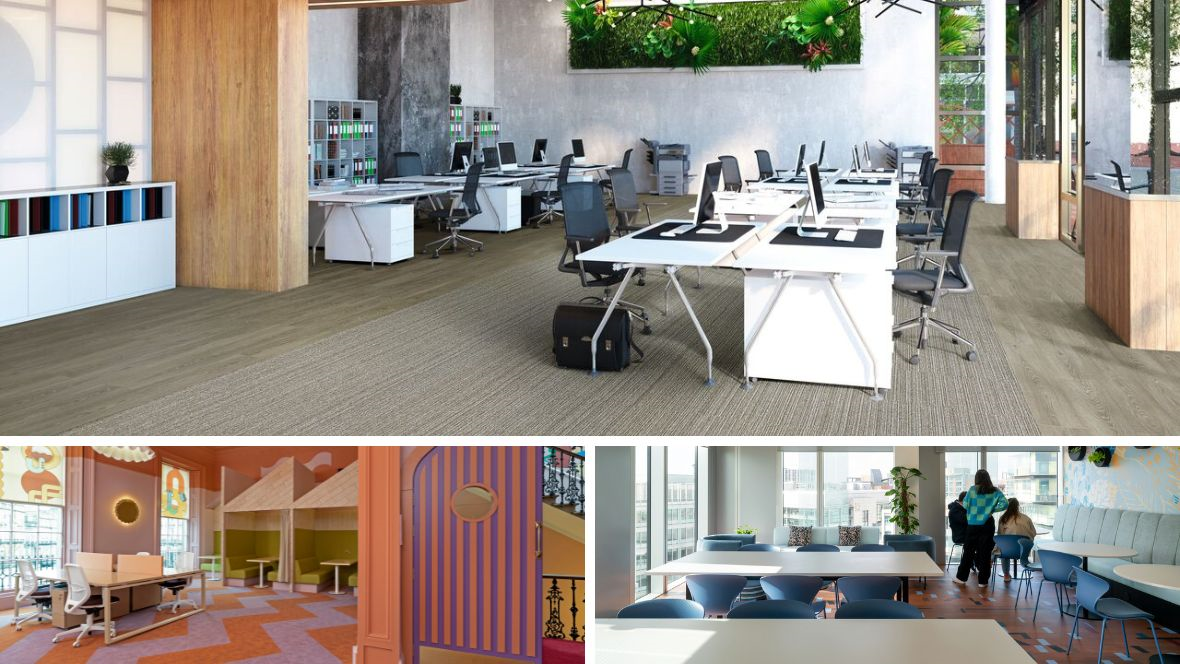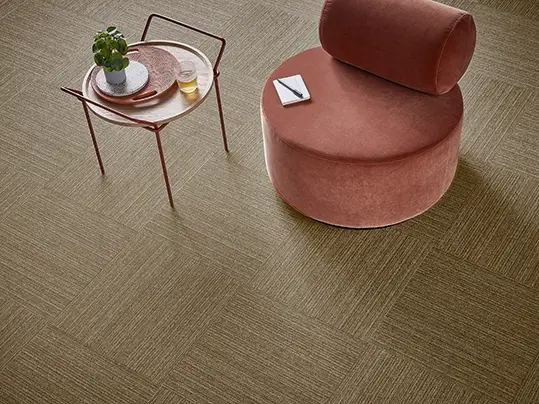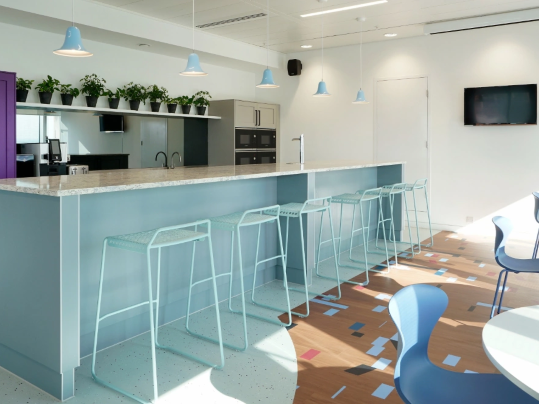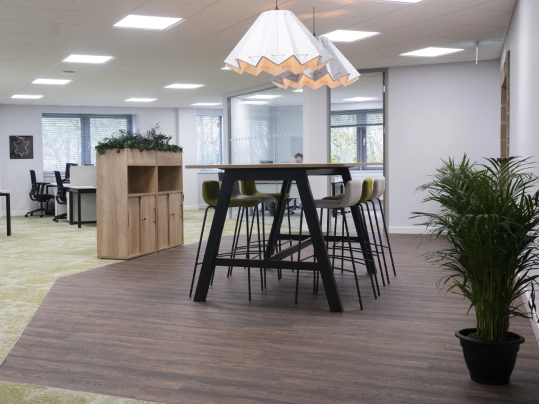Five tips: Designing collaborative space
July 2022

A collaborative workplace can have many benefits. In fact, encouraging employees to put their heads together can not only help increase the quality of work produced, but also the quantity. In addition, encouraging collaboration can create a much friendlier and inclusive working environment, which will aid employers in keeping the top talent at their respective workplace. So, how do you go about designing a collaborative working space?
Here, we cover the top five tips for encouraging collaborative work.

A main proponent of a good break-out area is to distinguish it from the office proper. This can be achieved in a variety of ways, but the simplest method to do this is by visually defining areas through different colour schemes for the furniture or flooring. When it comes to flooring it’s recommended to keep it natural and neutral, something that will help people feel more comfortable and relaxed.
For example, Forbo’s Tessera Struktur2 Linear carpet tile range in the Kaffe+Korn colourway, is a lighter, more natural looking carpet tile, which could be a good choice for this type of space - and with it being a carpet tile it provides that underfoot comfort you want when creating a comfortable break-out space for employees.
It goes without saying that limiting distractions in an office is beneficial; too much noise can inhibit an employee’s ability to focus and complete their assigned work. Collaborative workspaces encourage conversation and dialogue by their very nature and so a simple solution to this issue is to use interior finishes and surfaces to help minimise sound transference, which in turn will help to create a quieter place to work.
Textile flooring solutions such as carpet tiles inherently have a high impact sound reduction and so lend themselves perfectly to these areas, however for areas where a smooth floor covering is required, acoustic vinyls and even natural linoleum solutions such as Forbo’s Marmoleum can provide an ideal solution alongside a wealth of design choices.

Creating a space with plenty of natural light has been shown to increase productivity and creativity, but one report found that only 30% of EMEA office workers had access to natural light. Incorporating natural light into the workspace can increase the wellbeing, productivity and energy levels of workers, it also has the knock-on effect of reducing eyestrain.
Flooring can help to maximise lighting within a building. Using a solution with a high Light Reflectance Value (LRV) means that light will reflect from the flooring surface and illuminate a space further. Utilising these two factors can be key in creating a productive working environment, which will in turn help to provide a bright collaborative space.
The modern office needs to be accommodating to employee’s needs, this includes access to good facilities such as fitness spaces, food and social areas. Not only can this increase employee wellbeing, which in turn will reduce sick days, but it can help employees to feel a sense of togetherness.
This camaraderie has become very important for prospective employees who want to know the place they are going to commit the majority of their time to is a nice place to work at – and has everything they need!


Since 2016 over 80% of the UK population have moved into urban environments, but access to the outdoors is still key to maintaining good physical and mental health – and this is just as important in office spaces.
By incorporating plants and elements inspired by natural materials such as wood and stone into your workspace the much-needed human connection to nature is brought inside, creating a fresh, engaging workspace.
In conclusion there are a variety of factors to consider when designing a collaborative office space, which can be achieved by creating a good atmosphere with plenty of natural light and space to stimulate creativity and productivity. By using a number of these design tips, you can make your workspace more collaborative and help foster a good work ethic in your employees.